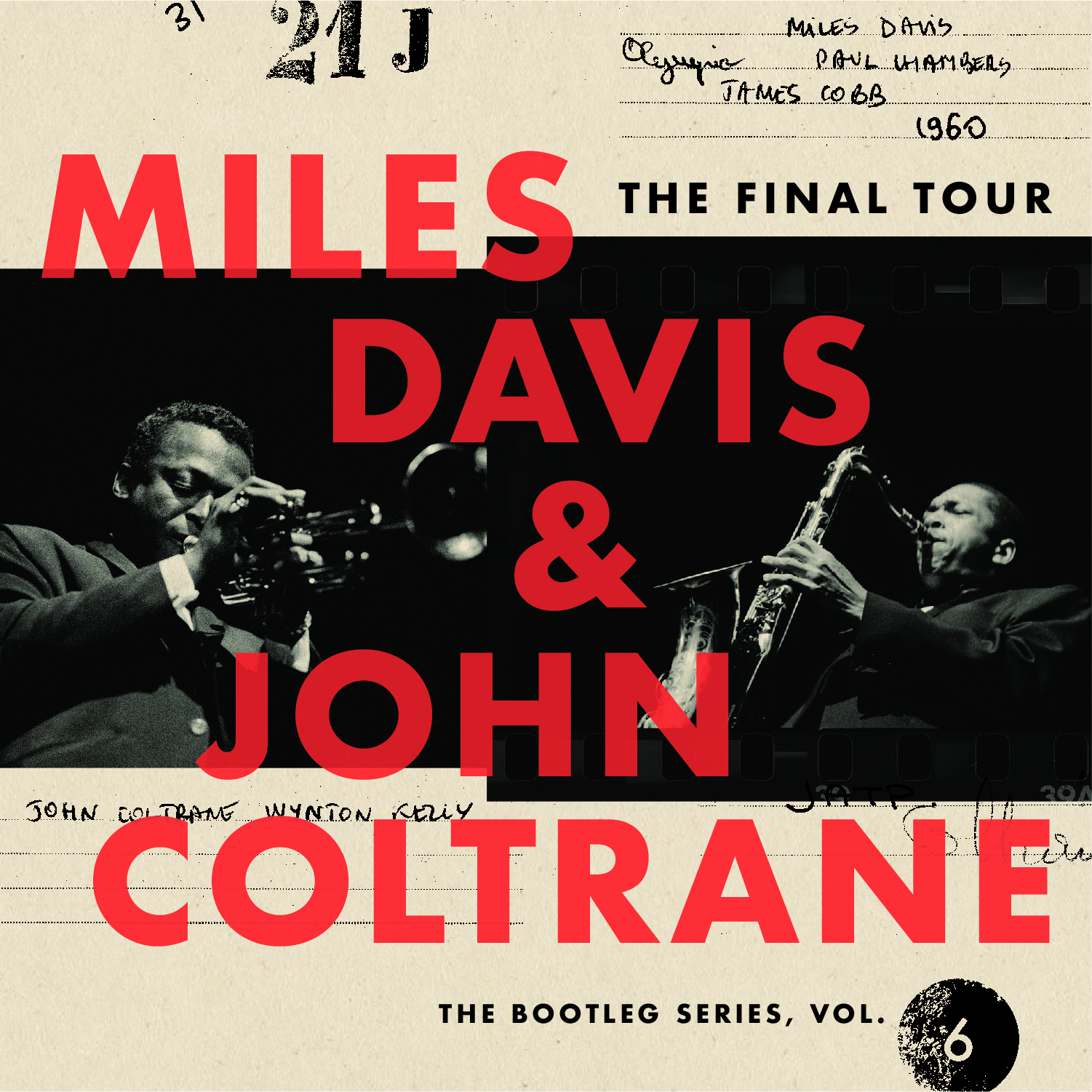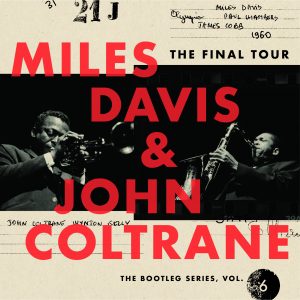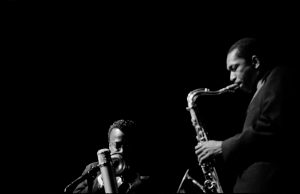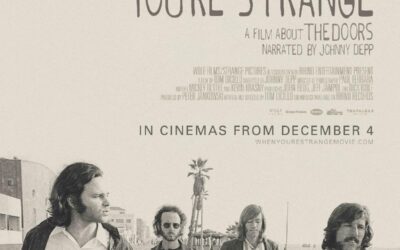Officially Available For First Time in New Box Set in Latest Volume in Award-Winning Miles Davis Bootleg Series
By Harvey Kubernik c 2018
In March, Columbia/Legacy Recordings, a division of Sony Music Entertainment, released Miles Davis & John Coltrane-The Final Tour: The Bootleg Series, Vol. 6
Coltrane-The Final Tour: The Bootleg Series, Vol. 6
Available in 4CD boxset and digital configurations, Miles Davis & John Coltrane-The Final Tour: The Bootleg Series, Vol. 6 brings together, for the first time in an authorized edition with state-of-the-art production, five mythic concert performances as heard by lucky audiences during the epochal Spring 1960 Jazz At The Philharmonic European Tour presented by impresario Norman Granz.
Showcasing the musical chemistry shared by Miles and Trane, Miles Davis & John Coltrane-The Final Tour: The Bootleg Series, Vol. 6 offers five of the best recorded shows from that pivotal 1960 tour (Coltrane’s last as sideman): two shows from Paris’s L’Olympia Theater on Monday, March 21; two shows from the next night at Stockholm’s Konserthuset; and one from Copenhagen’s Tivolis Koncertsal three days later, on March 24.
The box set was produced by the multi-Grammy winning team of producers Steve Berkowitz, Michael Cuscuna and Richard Seidel. And mastered by multi-Grammy winning Sony Music engineer Mark Wilder. The set is authorized for official release by the Miles Davis Estate, the John Coltrane Estate, and Columbia Records/Legacy Recordings. Erin Davis, Cheryl Davis and Vince Wilburn, Jr. are Executive Producers.
Miles Davis and John Coltrane were each implementing their own jazz revolutions at the time these recordings were made and the electrifying sonic frisson produced by the sometimes-competing/sometimes-intertwining musical visions of the artists perplexed contemporary jazz fans–many of whom were just getting acquainted with the recently-released and now iconic Kind of Blue.
The repertoire performed in this collection is a veritable Miles Davis “Greatest Hits” including “ ‘Round Midnight,” “Bye Bye Blackbird,” “On Green Dolphin Street,” “Walkin’,” “All Of You” and “Oleo,” all of which he had made his own and had been performing for some time. As well as more recent additions to the repertoire which were composed by Davis – “So What” and “All Blues” — both from Kind Of Blue.
Miles Davis & John Coltrane-The Final Tour: The Bootleg Series, Vol. 6 is essential listening, an invitation to travel through time to experience the beauty and magic of Miles and Trane at the peak of their collective powers. The memorable ensemble includes Miles Davis (trumpet), John Coltrane (tenor sax), Wynton Kelly (piano), Paul Chambers (bass), Jimmy Cobb (drums), all of whom had been performing together since the Kind Of Blue album.
Originally broadcast on European radio in March 1960, these concert recordings have been long sought after and prized by collectors and are now officially available at last as the latest installment in Columbia/Legacy’s acclaimed Miles Davis Bootleg Series.
For 12″ vinyl collectors and audiophiles, Columbia/Legacy released The Final Tour: Copenhagen, March 24, 1960 as a single 12″ vinyl album.
A 2LP 12″ vinyl edition of Miles Davis & John Coltrane-The Final Tour: Paris, March 21, 1960 has been prepared exclusively through Vinyl Me, Please as part of their new VMP Classics subscription featuring the best jazz, blues & soul reissues on 180g black vinyl with exclusive listening notes. Available by signing up at http://www.vinylmeplease.com/
Vince Wilburn, Jr., nephew of late jazz icon Miles Davis, oversees Miles Davis Properties, LLC, along with Erin Davis (son of Miles) and Cheryl Davis (daughter of Miles). Wilburn, Jr. is a highly accomplished drummer and producer, who has both toured and recorded with Miles on many recordings from 1984 through 1987.
More recently, Wilburn, Jr. is performing with the Miles Electric Band to sold-out crowds globally. On Saturday, June 9th, Miles Electric Band is booked for the Hollywood Bowl at the annual Playboy Jazz Festival.
Wilburn, Jr. is also a co-host of Miles Davis House at SXSW with Erin Davis, an annual day party featuring a wide cross section of multi-genre, emerging talent.
I interviewed Vince this past March about the Davis and Coltrane The Final Tour and the legacy of Miles Davis.
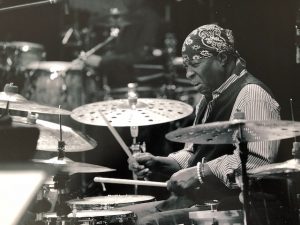 HK: When and how did the planning of this Davis/Coltrane box happen?
HK: When and how did the planning of this Davis/Coltrane box happen?
VW: We met with the Legacy team and we came up with a plan of what would Miles lovers like next. Something that is special. We don’t want to, for lack of a better word, keep re-hashing reissues. We come up with ideas and bounce them off each other.
“We get tapes from all over. People send us bootlegs, videos, audio. It’s collectors, you know. [Carlos] Santana is an avid collector. He’s serious.
“With the Bootleg Series we’re even like detailed down to the packaging. That’s why the box sets get so much notoriety and awards. Because Miles was that kind of guy. So the packaging is gonna match the music.
Q: Do you have any reflection about the Davis and Coltrane relationship that is officially documented now for the retail world?
A: I think Miles really loved John. I never talked to him about it. But I can bet money he really loved John Coltrane.
Q: Is it a different Miles we hear when he is sharing a bandstand with John?
A: Yes. I mean, it’s different, and John sounds like he’s reaching extra for something to me. He sounds like ‘I gotta get it out. I got to get it out what I’m feeling inside of me.’
Q: The musicians (Kelly, Chambers, Cobb) join with Coltrane and Davis as a unit on these recorded live dates. Drummer Jimmy Cobb wails.
A: Jimmy Cobb to me is a super hero. The touch and the way he approaches the drums still to this day. It’s magical. Jimmy Cobb was like a painter. Wynton Kelly. Amazing. Paul Chambers, come on now. It was like an all-star team.
Q: What was it like for you to initially hear the playbacks of this material?
A: I think my mother is there. Uncle Miles is definitely there. I have dreams about him. And what I try and do personally anything Miles I’m excited about. And I’ve been like that since I was a kid. When he used to come to Chicago. My mom would dress me up and get my hair cut, ‘cause uncle Miles was coming. And this was back when you could meet the passengers at the gate of O’Hare International Airport. And I was excited running to the gate and then walking back through the terminal, if you can picture this, with everybody stopping Miles, the sky caps, and he’s clean, and I’m a little kid tagging next to him. And so it’s that kind of love. ‘Blue and Green’ was my grandmother’s favorite song.
“And then, as I got older, and really knew the magnitude of this man, and it was like wow. And that’s how I feel when I listen to the music when I’m in the [tape] vault. And when I was on stage with him in the eighties there was the wow factor.
“When we were off stage he would change clothes five or six times a day. I don’t know anybody to this day who does that. I saw him in some jeans and denim overalls one time. And I saw the iconic photo of him wearing denim at Newport. Man, the music, the man, and the persona it was like a storm.
“When I lived with uncle Miles in Malibu with Erin, you are talking about somebody who ate, slept and dreamt music. Miles was a hell of a cook but he would eat small portions. And he was always in the boxing gym. That was key. Always was in tune with his body, with his clothes, and the way his
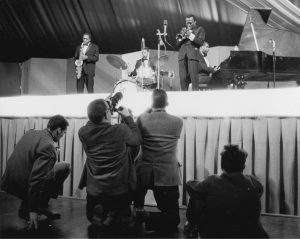
Jazz musician Miles Davis on a JATP concert (Jazz at the Philharmonic). 1960. Photograph. (Photo by Franz Hubmann/Imagno/Getty Images)
clothes fit and felt.
Q: What were some of the things you learned from Miles playing with him?
A: Never rest on your laurels. Keep the music moving and advancing. It was all about the music, what is going on onstage or in the studio. And that’s the way I approach the Miles Electric Band.
Q: You dig vinyl.
A: I’m a vinyl head. There is no question you get better hi-end on vinyl than CD’s. Without a doubt. We’re doing a deal with MacIntosh now for a signature Miles Davis turntable.
Q: You get approached for all sorts of endorsement and brand partnerships. Have there been requests to sample the Miles Davis catalog by rock, hip hop and rap artists?
A: We were approached by a hip hop group who wanted to use something from Sketches of Spain. And they opened up with ‘bitches and whores,’ so we shot it down. But the estate is very open to positive messages with music and we’ll listen to anyone who wants to come at us to sample any of any Uncle Miles’ music. We don’t want anything derogatory or any talking down of women or race. All positive messages.
Q: Do you have any theory why the music of Miles Davis endears and endures many decades after initially being created?
A: I think that when you have a person who has changed the course of music four or five times it’s like, me personally, even if I wasn’t related to Uncle Miles, I’d want to hang on to his every word, you know. I’d follow him like the Pied Piper. And he was the man back then. And still. Anybody I talk to, Charlie Watts, Keith Richards, John Mayer, everybody loves Miles.
I asked several musicians, deejays and filmmakers to comment about Miles Davis & John Coltrane-The Final Tour: The Bootleg Series, Vol. 6 Dr. James Cushing, KEBF-FM deejay who hosts Miles Ahead.
“I’m digging Coltrane’s solo on the Paris take of ‘All of You’ right now, and the whole Paris show is simply amazing — I’ve never heard tenor saxophone played like this, never at this level of speed or musicality or soulfulness.
“Coltrane has taken his playing to the point that it seems as though he is taking his concept of modal improvisation using scalar patterns as far as it can possibly go before it explodes into something entirely other. This is the sound of the future in the guise of the new present, with Miles on top of his repertoire and his wardrobe, playing sparse suggestions to set up Trane’s exhaustive catalogues of possibility. It’s the long-awaited meeting of Emily Dickinson and Walt Whitman, only it really swings.”
Kenneth Kubernik: Author and musician:
“Like Ruth and Gehrig, two titans from an earlier ‘Jazz Age,’ who rose above their gifts into the rarefied mists of the American Avalon, Miles Davis and John Coltrane bestrode the 1950s like intemperate Gods who brandished their instruments with a kind of lethal swagger.
“Miles, pitch black and brooding, blew volleys of short, serrated edges, often burnished in a soothing liquid amber, as artful and unforgiving as a Floyd Patterson combination. Coltrane, strong and stoic as Paul Bunyan, privileged rhapsodies of notes whose cumulative weight could drown the uninitiated listener in pools of sorrow. There were no easy outs when they hit the bandstand, as fearsome a front line as ever counted out a downbeat. Befitting their mercurial personalities, their partnership was fraught; periods of great productivity (the small group recordings for Prestige and Columbia) followed by dramatic ruptures, precipitated by ‘Trane’s harrowing drug use.
“In 1960, Coltrane recommitted himself to his family and craft, a searing exercise in self-renewal that would lead to his great creative outpouring in the years to follow.
“But first, he agreed to join Miles on one last European tour. These performances have been exhaustively documented and debated over the years; Miles content to skip lightly over a set of familiar standards while Coltrane laid waste to any conventional musical expectations being served up by the spit-polished rhythm section of Kelly, Chambers and Cobb. No one was happy but that didn’t diminish the value of the music; on the contrary, catching supremely-skilled artists in agitated flight has kept this music in a perpetual state of irresolution which has merited continual critical and commercial reassessment.
“And so, it’s Sony Legacy’s turn to repackage three of these fabled concerts and reintroduce them to the next generation of listeners whose ears are rife for a fresh revelation. Like picking the greatest ballplayers of all time, jazz fans, like their baseball brothers, have long recognized this undertaking as a blood sport, which, given the stakes, is as it should be.”
Michael Simmons, musician and writer:
“The 1960 European tour recordings are remarkable for the variety of styles heard: Miles’ muted, cool, I-vant-to-be-alone buzz; pianist Wynton Kelly’s classy, artful solos; Coltrane’s early forays into the avant-garde with his trademark bursts of notes – what writer Ira Gitler famously dubbed ‘sheets of sound.’
“Liners scribe Ashley Kahn points out that Trane was also experimenting with multiphonics, or ‘playing more than one note at a time.’ Some found the contrast of these stylistic variations jarring – I think it shows there’s plenty of room in jazz to be yourself.”
Sarah Kramer, trumpet player and horn arranger:
“Melodies soaring over driving changes, swinging grooves, and so versatile to also play so cool and laid back, bluesy, what a band!! Nothing beats a live performance, as far as energy/vibe, which includes an exchange from the audience(s). The height of the Kind Of Blue period, such a profound time/sound, and captured so well in these recordings, such depth, so special. Such great songs and improvisation. ‘Round Midnight’ is one of my most favorite melodies and it’s such a treat to hear it live with these musicians… And then the originals, like ‘All Blues,’ Miles’ classics… so cool to hear the improvisations that have themes/licks that ended up on the Kind Of Blue album, but being played fresh and in the moment in these live performances in a different way.
“As a trumpet player, Miles has been a major influence for me. Whether (Harmon) muted or open horn, he had his signature sound/style that transcends. So lyrical, such great phrasing and rhythmic sensibilities. I’ve always dug his use of space and his tone. So dynamic, and I love all the bent notes! Miles was tremendously tasteful.
“As was John Coltrane…His colorful flurries painting pictures of feeling(s). Trane made music on a spiritual level. I loved hearing his interview included in this box set, to hear his speaking voice, and to hear him talk about his journey within the freedom of improvisation that Miles and this band offered each other collectively. That modal approach to playing over changes and using horns as a voice, as if singing, but expressing far more without words… The best musicians are great listeners, and these players are so tuned into each other and themselves. These are timeless innovators in their prime, and we’re so lucky to have these moments captured and accessible.”
John Scheinfeld: Director, Chasing Trane: The John Coltrane Documentary:
“Not being an obsessed John Coltrane fan, I learned many things about the man and the musician while making Chasing Trane: The John Coltrane Documentary.
“Perhaps the most significant was understanding the arc and nuances of his spiritual journey, into which we take a deep dive in the film. It is the spiritual aspect of his life that makes Coltrane so unique and most certainly different from so many other mainstream artists. Over the years I’ve interviewed many rock-and-rollers who aren’t the least bit embarrassed to admit that the reason they got into music was to score with girls and drug dealers. But for the better part of his life spirituality was essential to Coltrane’s music and message. It was when he lost his spiritual center and became a heroin addict that his creativity, sense of responsibility and progress as a musician were inhibited. And it was when he kicked his addiction and returned to a spiritual path that he became the iconic musician we know today.”
A portions of this article first appeared in Record Collector News magazine May-June 2018 issue # 68.
( Harvey Kubernik is the author of 14 books. Inside Cave Hollywood: The Harvey Kubernik Music InnerViews and InterViews Collection, Vol. 1 was published in late December 2017, by Cave Hollywood. In March 2018, Other World Cottage Industries published Kubernik’s The Doors Summer’s Gone. Kubernik is scheduled to publish another music title during the last quarter of 2018. Earlier this century, he was a featured speaker discussing audiotape preservation and archiving at special hearings called by The Library of Congress, held in Hollywood, California.)

